Harsher punishment planned for drunk drivers
Not only are you tip-toeing along our streets, preparing
for the next police check, the Land Transport Department plans to discuss
harsher punishment on drunk drivers following a directive from a deputy prime
minister.
Chirute Visalachitra, director-general of the department,
said he would discuss the issue with the police, judicial authorities and the
civil sector. Chirute responded to Deputy Prime Minister/Public Health Minister
Anutin Charnvirakul who posted on his Facebook account that he wanted the
department to revoke driving licenses of drunk and reckless drivers.
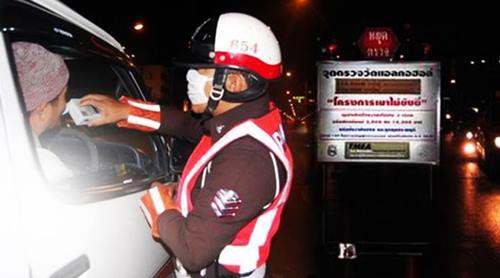
DUI.
According to the director-general, the licenses of public
transport drivers will be revoked after they repeated their driving offences.
For the wrongdoing of private vehicle drivers, a concerned court will decide on
punishment depending on the nature of their offences.
Chirute also said that his department was merging the land
transport law with the vehicle law. The new law would certainly include harsher
punishment on drunk and reckless drivers but the punishment changes through the
new legislation would take time. (TNA)
This could not really be called Draconian, as in some
Scandinavian countries you can lose your car. In Sweden, the amount of your fine
depends on how much money you have in the bank, which can be a good or terrible
thing. The DUI laws in Sweden are among the toughest in the world. The variable
fine seems like a fair deal for individuals with a small balance in their bank
accounts. However, people with high balances can get outrageously high fines.
For example, one DUI convict had to pay a penalty of $21,000.
South Africa also has strict DUI laws and rightfully so.
The country sees over 45 percent of all unnatural deaths result from drinking
and driving. While offenders face penalties similar to those of the United
States (such as license suspension and monetary punishments), they also risk
spending up to six years in jail. In Costa Rica, El Salvador and France, your
car can get confiscated if you get a DUI.
The police in these countries have the right to seize the
cars of drunk drivers. Authorities may even sell impounded vehicles rather than
returning them to the owners.
Of course, none of the countries mentioned above require
you to have a “Blue Book”! And report in every 90 days.
The ‘green’ disease
We are all going mad (other than me). One corporation to
join the ‘green’ movement was Bridgestone, which proudly announced that the
grooves in the F1 race tyres would be green. Were they pulling my leg? And
yours? I suppose it was biodegradable paint.
The official stance was provided by Bridgestone, saying,
“We hope that the launch of the ‘Make Cars Green’ tyre will draw public
attention to the many environmental initiatives in and around Formula One,”
explained Bridgestone’s then CEO Shoshi Arakawa. “Environmental preservation is
at the center of our work at the Bridgestone Group and we hope that this
collaboration with the FIA will help to spread this ethos worldwide.”

Fancy some green
tyres?
“New rule changes, alongside the support for
awareness-raising initiatives such as the ‘Make Cars Green’ campaign, will
change the face of motor sport and place it at the very heart of environmental
developments in the automotive sector,” explained Max Mosley, then President of
the FIA, Formula One racing's governing body. He’s pulling our legs too.
The world has entered this ‘guilt’ phase. As Chicken Little
said, “The sky is falling” (through the hole in the ozone layer), but “I’m not
to blame! It’s the other polluters! I’m green.” So we have the ludicrous
situation of Honda claiming that its F1 cars were promoting green technology and
now Bridgestone with its green tyres. Total fatuous nonsense.
When you sit down and think about it rationally, just how
much does F1 affect the polar ice caps? The words ‘bugger’ and ‘all’ seem to
leap into the forefront of my mind. Particularly when you contrast the two days
of running every fortnight against the 24 hours of baht buses all day and every
day in Thailand.
Give us a break! Give us good clean racing with plenty of
passing, and forget the green rubbish. Leave that for governments (and Honda and
Bridgestone).
Motor Show time again
March 25 to April 5 are the public days for the Bangkok
International Motor Show this year. I am unsure of the numbers or makes, but as
it is the number 1 show in Thailand, I am sure it will once more be very well
attended.
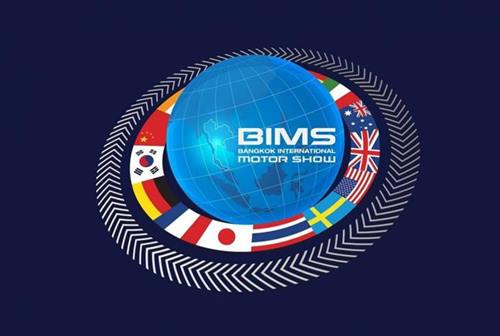
Bangkok
International Motor Show.
Of course, will there be any Chevrolet models, after
Chevrolet sold out to the Chinese Great Wall and making 1,500 workers redundant?
By the way, this pulling out was not something decided upon at the last minute
as Chevrolet (General Motors) also pulled out from Australia at the same time,
where they had been trading as General Motors Holden (GMH). Again, this was no
shock as GMH had stopped manufacturing Holdens in 2017, and were filling the
dealerships with re-badged Daewoo’s called “Holdens”.
The average Chevrolet owner in Thailand is, of course, less
than impressed, with 50,000 THB off the top of their car’s value and now with an
orphan in their garage.
Government sources say that the Rayong plant will
manufacture EV’s with the long range plan being to make Thailand the center of
EV production in this area. Will Great Wall’s EVs re-employ the 1,500 redundant
workers?
Cremation ceremonies for the Toyota Prius
In an interesting press release from Toyota a few years
back, the company outlined the cremation for the new Prius. Long before the
first new Prius reached the showroom, Toyota had plans in place to ensure that
when the car reaches the end of its useful life it can be disposed of in an
environmentally responsible fashion.
When its driving duties are done, more than 85 percent of
new Priuses can be recycled and more than 95 percent of its materials can be
recovered in a process that only accounts for a tiny proportion (approximately
two percent) of its full lifecycle CO2 emissions.
Special attention has been paid to the efficient recycling
of new Priuses high voltage nickel-metalhydride battery with a new process that
allows 95 percent of the battery components to be recovered for re-use with
near-zero emissions.
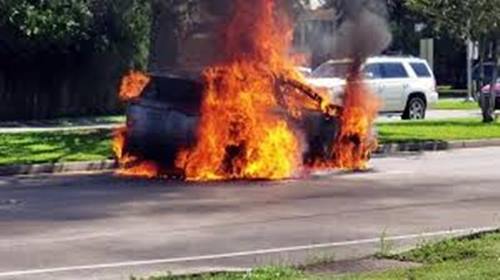
Not the way to
recycle a Prius.
At the vehicle’s end-of-life, the battery is removed at an
authorized Prius service centre. Toyota has appointed authorized waste
management companies in each country where the car is sold, which are
responsible for transporting the batteries to one of three European Final
Treatment Companies (FTCs): SNAP, Accurec and Umicore.
The recovery process begins with the removal of the
battery’s outer casing, which itself can be re-used in steel making processes.
All the wires and electronic parts are sent to a specialist recovery company,
while the power cells themselves are recycled using an induction-based vacuum
thermal system.
This is an evolution of the traditional waste heat
treatment process, but it consumes less energy, is almost emissions-free and is
highly secure. The cells are put into a sealed container from which all air is
removed, significantly reducing internal pressure. The container is then heated
to 800į C. When the temperature reaches 400į C all organic materials break down
into a mixture of oil and water, which is sent on to a licensed water treatment
company for processing. The power cells are then exposed to hydrogen, which
helps break the oxides down into metals.
What is left after the process is a highly concentrated
nickel alloy which can be re-used as a raw material in the production of new
batteries. All the other metallic elements recovered can be used in the
manufacture of stainless or other specialist steels.
Of course, that came from Europe. Toyota hasn’t seen our
recyclers here in action. Within 24 hours of being dumped, there would be
nothing left. Guaranteed!
300 km/h on a Sunday afternoon
On the motorway, many of you will have driven at 160 km/h
(the old 100 mph, the magic ton, before we went metric). Some of you with a
better motor car will have driven at 200 km/h. If you are very brave (or perhaps
foolhardy), your BMW or Mercedes may even let you experience 250 km/h, but at
that speed you will be hanging on for grim death, and praying there is no slow
traffic in front.
Let me now tell you what it is like at 300 km/h in a Lola
T430 Formula 5000 racing car. The engine started easily and a dab on the
accelerator produces a very deep growl from the engine behind your head. You
know you have 550 bhp behind you.
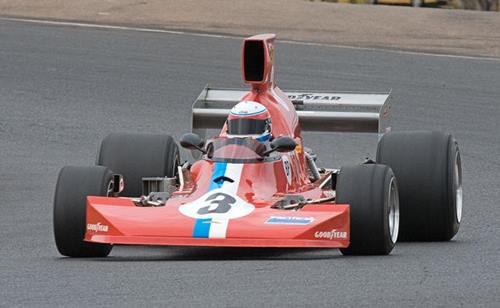
300 kph Lola T
430.
The Hewland gearbox on a car like this has no synchromesh,
and the ‘dog’ gears select with a clunk and have a rattle at idle - this is not
dangerous but it is disconcerting at first.
The clutches on these race cars are not the soft pressure
progressive clutches of a manual road car, and do tend to be in or out, so
getting away from rest is a little tricky, but once trundling down the track you
can begin to take stock of your surroundings and tentatively start driving this
heavy beast with a little more throttle and some precision. At low speeds, the
engine with the full race camshafts, is very “lumpy” but soon you begin to use
more loud pedal and drive the car deeper into the corners. By making the front
tyres bite as you turn in under brakes, you could then feed in the power to
control the rears and avoid too much oversteer. With all the horsepower at your
disposal, cornering is done by the right pedal, and corrections are done by the
steering wheel!
You could leave the braking so late, you begin to think you
will never slow down in time – but you can. In fact, sometimes I had to lift off
the brake and use some throttle into the corner as I was braking far too early.
The next factor is which comes to light is comfort. Race cars are built for
speed, not comfort and it may require some sponge rubber to protect you from the
effect of the g-forces. This is why F1 drivers wear knee pads to buffer their
body from the effects of high speeds.
The next mental adjustment you have to make is for the
acceleration of race cars like this. Zero to 100 km/h comes up in less than
three seconds. You are no sooner out of one corner than to find the next one
rushing up and it’s back on the brakes, turn in, throttle out, and then the
next! By the time you are half way through one corner, you are preparing
yourself mentally for the next. 300 km/h on the straight is the easiest part of
the entire exercise, believe me!
|

|
Bond goes Bush Bashing
in an Aston?
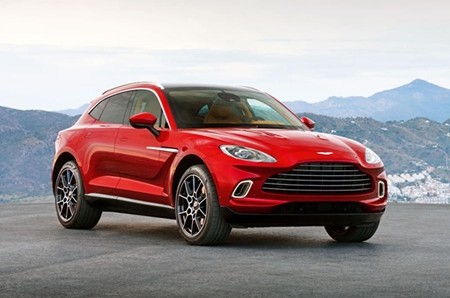
Aston Martin DBX.
It is no secret that Aston Martin has not been financially
healthy for some years. They have turned out some of the best looking cars and
made a deal to get James Bond to sit in them, but still come up short compared
to Ferrari for example.
With the world’s opinion leaning towards soft-roaders,
think Porsche Cayenne, Bentley Bentayga and Lamborghini Urus and now Aston
Martin has joined the Off-roaders with its newly released DBX and bargain
basement price of AUD 350,000. Aston is saying that they are all sold out. True?
Or has Aston found a white knight?
Patrik Nilsson, regional director for Aston Martin says the
car’s popularity is “beyond expectations. We can safely say that we are sold out
for this year in Australia and New Zealand.”
Technical specifications are interesting. Power comes from
a twin-turbocharged 4.0-litre V8 with 405 kW and 700 Nm, enough to reach to 60
km/h in 4.5 seconds.
That’s the same Mercedes-AMG sourced engine found in Aston
Martin’s Vantage coupe, as well as Mercedes’ own line of performance cars (such
as the popular C63 S). Thanks to lightweight aluminium construction, a 550 hp
drivetrain and electronic adaptive damping for every wheel, the DBX drives more
like a sports car than an SUV.
Despite 700 Nm this may not be enough to drag A-M out of
the swamp. Enter stage left a white knight in the form of a consortium led by
Canada’s Lawrence Stroll, father of current Formula 1 driver Lance Stroll.
However, his group has apparently not learned the old adage, “To make a small
fortune out of motor racing – start with a large fortune.”
Prior to Stroll’s investment, the DBX was touted as a
make-or-break moment for the brand. But now with Stroll’s millions, A-M can
probably breathe a little easier.
But just who is Lawrence Stroll? In a career spanning more
than three decades, Canadian fashion mogul Lawrence Stroll has relied on a
simple formula: take over a brand that’s either niche, or in trouble, or both,
and beef it up for half a dozen years. Then exit with a tidy profit.
It’s a skill he honed in the 1980s bringing Ralph Lauren’s
New England look to Europe, before buying Tommy Hilfiger in 1989 with long-term
business partner Silas Chou – another clothing brand that celebrated Americana
with its blue-red-white emblem and country-club attire. Add to that list Michael
Kors, teetering on the brink of collapse when the duo picked it up in 2003. By
the time Stroll and Chou sold out in 2011, Kors was the king of affordable
luxury with a sky-high valuation.
Now is A-M niche enough to give Stroll and Chou the
leverage the investors require? Rivals from Porsche, Bentley and Lamborghini all
share their underpinnings with the cheaper Volkswagen Touareg. The DBX has its
own platform says A-M breathlessly. Interesting, but that’s not a selling point,
I’m afraid.
However, the DBX is sold out in Australia before anyone has
even driven it. Priced from $357,000 plus on-road costs, the Aston martin DBX
supposedly is a rival to the likes of the Porsche Cayenne, Bentley Bentayga and
Lamborghini Urus.
The DBX does not share its underpinnings with any other
vehicle. “It’s a bespoke car,” Nilsson says.
“Which I think, and customers think, you deserve when
you’re paying this kind of money for a car.
“We definitely hit the sweet spot with this.
“People were clearly looking for a good-looking SUV that
drives like an Aston.”
One pre-production example of the DBX is in Australia for
customer events and public display. Customer cars arrive in the third quarter of
the year.
Some 60 percent of customers in the region are new to the
brand. Which is surprising, as Aston Martin set about creating the DBX because
three quarters of its sports car customers also had an SUV in the driveway.
That number could be even higher today.
Kevin Wall, regional manager for Aston Martin, says many
DBX customers are women who were not drawn to the looks of Lamborghini or
Bentley SUVs. For me, it looks too much like the “Aston grille” Ford Fiesta of
10 years ago.
Chinese GP knocked out by a bug
The FIA has informed the F1 circus that the Chinese GP for
2020 has been cancelled. This follows the viral Covid-19 epidemic which has
already killed over 1,000 people in China.
The race was scheduled for April 19, but with the packed
calendar there is little likelihood of the Chinese promoters finding an
alternative date.
The closest GP on the calendar is Vietnam’s inaugural
meeting on April 5, but with Vietnam already having found the virus I expect a
cancellation here too.
Alfa or Alpha?
A common mistake, but the manufacturer with a long history
in motor sport is Alfa and the manufacturer with a short history in motor sport
is Alpha, formerly known as Toro Rosso, and better known in the fashion
business.
At the unveiling of the “new” car, there was plenty of the
usual pre-season bluster. "We must be within the first five in the constructors'
championship," declared team boss Franz Tost at the launch of the white and blue
AT01 car powered again by Honda at Red Bull's Hangar-7 facility in Salzburg.
Toro Rosso finished sixth overall last year, equaling their
best ever performance, and have an unchanged line-up of Russian Daniil Kvyat and
Frenchman Pierre Gasly.
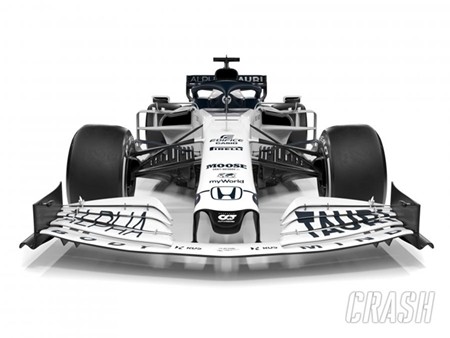
AlphaTauri.
AlphaTauri is a Red Bull-owned fashion brand established in
2016. The team have raced as Toro Rosso since 2006 when Red Bull took over
struggling Minardi.
They have brought through a succession of hungry young
talents, including Germany's four times world champion Sebastian Vettel,
Australian Daniel Ricciardo and Dutch youngster Max Verstappen.
Aussies in mourning
The year 2020 will mark the death of the iconic Australian
Holden brand. The Holden lion will disappear by the end of 2020 with the US
corporation that owns the Holden name (General Motors Holden). GMH has announced
the brand will disappear at the end of the year.
Hundreds of people are set to lose their jobs by the year's
end as General Motors axes Holden after seven decades of operation in Australia.
The shutdown is expected to cost at least 600 jobs. It comes three years after
local manufacturing ended when the Holden plant in Adelaide was closed.
The company has promised it would continue to provide
servicing and spare parts for at least a decade through its aftersales network,
which would also continue handling recalls if they arise.
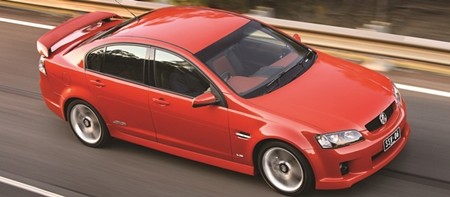
Goodbye Holden
Commodore.
GM has blamed “significant change globally and locally”,
which despite attempts to “sustain and improve the business” has not worked
financially for the business.
“After comprehensive assessment, we regret that we could
not prioritize the investment required for Holden to be successful for the long
term in Australia and New Zealand, over all other considerations we have
globally,” GM international operations senior vice president Julian Blissett
said.
He said Holden had been a “powerful driver of the
industrialization and advancement of Australia and New Zealand” over its “proud
160-year history”.
He wouldn’t comment on whether the company had explored
selling the brand, but it was revealed the Thailand factory that made the
Colorado pick-up has been sold to Chinese manufacturer Great Wall Motors.
The Holden dealer network includes 185 dealers in Australia
and 31 in New Zealand.
Classic” cars
A few years ago now, I was asked if there were any
“classic” cars in Pattaya, and whether the owners would be interested in
tailored “classic car” insurance. I replied that the closest anything in Pattaya
went to being “classic” was probably a 10 year old baht bus!
That was a few years ago, and the scene in Pattaya has
changed dramatically. Every day we seem to be unearthing more and more old cars,
and there is now a viable market for both sellers, buyers and restorers.
Of course, to find some of these older vehicles in
concourse condition is exceptionally rare, but “finds” do happen. One of my
friends down here was in the right place at the right time and became the owner
of an immaculate 1970 MGB roadster. This car had to be seen to be believed. In
fact, when the previous owner imported it after a ground up restoration in the
UK he was hit with horrendous import duty by the Customs Department. When he
protested and said, “Look, this car is 30 years old,” the stony-faced Customs
official smiled and replied, “But look new!”
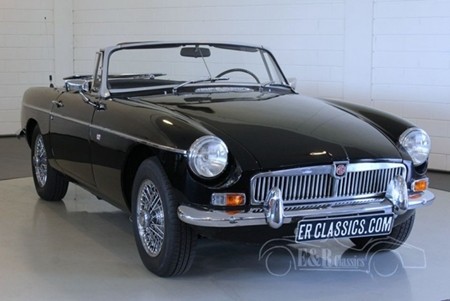
MGB.
However, cars like that are rare, and as (almost) everyone
knows, the costs of importing a classic into Thailand are quite prohibitive. So
that leaves us with cars that were either imported many years ago or were
built/or assembled here. And these are the cars that have been hiding in sheds,
disassembling yards, or if they have been very lucky, sitting in somebody’s
collections somewhere.
It is these “forgotten” cars that are coming to light now,
and in enormous numbers. For example, having decided this year to take my helmet
down from the peg and go motor racing again, I also chose to join the “Retro”
class of pre-1985 cars. The make that I had the most experience in was Ford, and
Ford Escort Mk1’s in particular. I raced these between 1975 and 1982, when they
were new. Simple engineering and easy to turn into racing cars.
|

|
Jaja Turnbull of the Expat Car Club sent me the following item.Thank you Jaja.
Here's an interesting picture I
have come across.This is the first production car from Toyota Motor
Corporation to roll off their, then, super new factory assembly plant in
Samut Prakan, Thailand.
The year is 1965, or Thai year 2508 and was a
humble Toyota Corona.
A sign of what was to come across the globe.The
Corona lasted in various guises from 1957 up until 2001.
Although Thailand had received earlier exports of
Toyopet and then Toyota, this was the first to be assembled here. A good
number of these still survive here too.
Across the world this was, for many countries, the
first available Toyota on their markets.
As we now know, the rest is history...
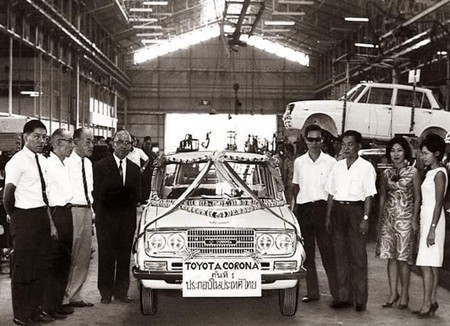
Toyota
Corona.
Thailand no longer Detroit of
Asia?
Thailand does put itself forward as being the
Detroit of Asia, but with exports right down, the figures do not quite
support the notion.Coupled with the fact that India has many more
manufacturers than Thailand.
Here is a list of all Indian Car brands including
foreign manufacturers building, or in a joint venture, in India:
BMW India (2006–present)
FCA India Automobiles (1997–present)
Jeep India (2016–present)
Ford India (1995–present)
Honda Cars India (1995–present)
Hyundai Motor India (1996–present)
Isuzu Motors India (2012–present)
Kia Motors India (2018–present)
Maruti Suzuki (1981–present)
Mercedes-Benz India (1994–present)
MG Motor India (2017–present)
Renault Nissan India (2010–present)
Nissan Motor India (2005–present)
Renault India (2005–present)
Toyota Kirloskar Motor (1997–present)
Toyota Kirloskar Motor Pvt Ltd is a subsidiary of
Toyota Motor Corporation of Japan, for the manufacture and sales of
Toyota cars in India. It is currently the fourth largest car maker in
India after Maruti Suzuki, Hyundai, and Mahindra. Production output:
142,500 units (2016)
Number of employees: 7,000
Founded: October 6, 1997)
Volkswagen Group Sales India (2001–present)
Audi India (2007–present)
Porsche India (2004–present)
Škoda India (2001–present)
Volkswagen India (2007–present)
Defunct manufacturers
Multix (2015–2018), a joint venture by Eicher
Motors and Polaris Industries
Rajah Motors (1981–2009)
San Motors (1996–2013)
Sipani (1978–1997)
Standard Motor Products (1948–2006)
Swaraj Mazda (1983–2011)
Tata Motors (discontinued marques and subsidiaries)
Tamo (2016–2017)
Foreign manufacturers formerly building in India
Daewoo Motors India (1995-2003)
FCA India Automobiles (discontinued marques and
subsidiaries)
Fiat India (1996–2018)
General Motors India (1995–2017)
Chevrolet India (2003–2017)
Opel India (1996–2006)
Swaraj Mazda (1983–2011)
Some (real) MG history
With the MG company, being owned by SAIC in China,
a few words about the history of the company are in order.
The “father” of the MG Car Company was Cecil Kimber,
who was employed by William Morris as a sales rep but then took over the
position of Sales Manager of Morris Garages after the incumbent
committed suicide!However, Morris Garages dated back to 1913 when Morris
changed the name of his business from the Oxford Garage to Morris
Garages (William Morris Proprietor).
It was 1921 when Kimber joined Morris Garages, but
Kimber saw that there was an opening for performance cars and began to
modify Morris cars by special order.
The modifications began by lowering the steering
column and thesteering ratio was also modified, springs were lowered,
better dampers and the battery box was relocated under the front seat
instead of on the running boards.
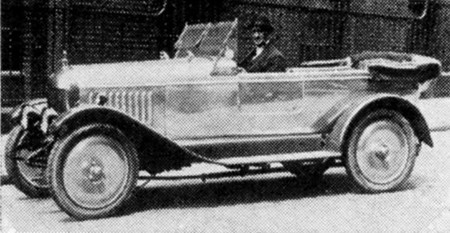
MG
14/28.
This model was called the MG 14/28 Sports and
retailed at GBP 350 compared to the standard Morris at GBP 175.The
initial advertisement was in May 1924 and was the first time the MG
Octagon logo was used.
Since then MG has had many corporations became the
owners of the marque, including British Leyland, by that time the
company was moribund.An optimist was someone who took his lunch to work!
Now Kimber’s Octagon is owned by SAIC in China, and
whilst it may not be a full-blooded sports car, it is very obvious it is
a car for today, as they are everywhere on our streets.
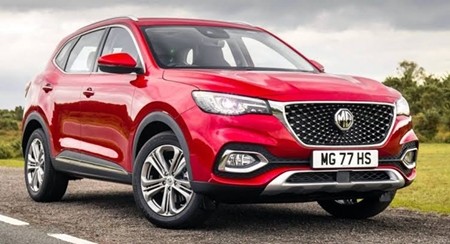
2020 MG.
True stories!
Having been involved in motor sport for so many,
many years, I have seen some of the funniest situations that have
occurred.Motor racing may be serious, but the people involved in it are
all “characters” in one way or another.By the way, all the following
tales are totally true.
The first one relates to one of the top motor
racers in Australia, who brought his Holden sedan racer from Sydney to
Brisbane to compete against the best that the Brisbane teams could
offer.On paper, the cars were very similar in all respects, but the
Sydneysider was quickest after the first practice.It was then that one
of the local crews spotted the opposition sawing off the end of the
exhaust pipe.Being a quick thinking young lad, he noted that the other
team had dropped it in the rubbish bin and retrieved it.Rushing off to
his team, they sawed exactly the same length off their exhaust pipe,
this obviously being some sort of demon tweak.However, while they were
doing it, the Sydneysider came past.“Why are you doing that?” he
asked.It was then that he also revealed that the reason they had sawn
the end off theirs was they had changed trailers and the exhaust pipe
was sticking out and catching on the side of the trailer!
Getting race cars to the circuit always produces
some whimsical moments as well.At the old Surfers Paradise Raceway on
the Saturday of Qualifying, one driver was mooching through the pit
area, waiting for his crew to bring the car down from Brisbane.He met
his crew who were similarly mooching and said, “Which pit did you park
the car in?”The crew’s reply floored him.“You said you were bringing the
car, not us.”Great team organization – crew and driver at Surfers
Paradise and the race car in Brisbane.
Another trailer incident happened with one crew on
the way to the Mt Cotton hill climb circuit.They arrived and got out to
drive the car off the trailer – except there was no car on the
trailer!They knew they had put it on the trailer, so they hurriedly
retraced their route and there it was, sitting in the middle of the road
at a set of traffic lights.Obviously they had not tied it down and it
just quietly rolled off backwards after they had taken off.Fortunately
no damage, and nobody had hit it.
This next one happened to one of my team members,
and I was the witness to it, and we still laugh about it.We had been
invited to do some promotional laps at the local dirt speedway with our
four car team, running them between each race.Our fourth member was
running late and rocketed in with just five minutes to spare.“She’ll be
right,” he said, after releasing the tie-downs holding the car on the
trailer, and then neatly reversed the race car off his trailer, but he
had forgotten to put the ramps in position, and it jumped off the
end.Luckily no damage, despite its one meter drop-off.
Trailer problems feature strongly when race teams
get together for a social evening with a few beers.This one happened
when two of my friends were running at the top of the Australian Formula
2 championships.The next circuit was in Tasmania, about 2,000 km from
our home base.It was decided that rather than taking two trailers down
we would make my trailer into a double-decker, so one tow car would get
both race cars to the circuit.The double deck fitted well and both F2
cars and spares were packed up ready for the trip.The only problem was
that the driver had to catch the ferry to Tasmania from the mainland and
the outfit had only 24 hours to get there.“No worries,” we all said as
we watched the double-decker’s tail lights disappear into the night.It
turned out that rather than ‘no worries’, it was all ‘worries’.Since we
had not tried running the double-decker beforehand we did not know that
it would get the wobbles at anything greater than 80 km/h.The poor
driver had to sit at 79 km/h all the way, no rest stops and just made
the ferry with 30 minutes to spare.We changed the weight distribution
for the trip home, something the driver could not do on his own on the
way down.
The next true (and amazing) tale happened when I
was on a Porsche club rally, and we were coming back from Adelaide, a
3,000 km trip.Australia is a big place!We had pulled into a motel for
the evening, and we were 11 cars, every one a Porsche 911.I got out,
pushed the locking button down on the driver’s door and swung the door
shut.As it clicked into place, to my horror, I saw that the keys were
still in the ignition.What to do?Porsches are just about thief-proof,
and none of us were accomplished car thieves like Nick Cage in the great
movie “Gone in 30 seconds”.In desperation, I asked for the other 10
driver’s keys and tried them in my door lock.Amazingly, the keys from
the 911 parked closest to mine opened my door!And just as amazingly, my
key would not open his, though his would open mine.But neither key would
operate the ignition of the other car.I was certainly lucky that
evening.
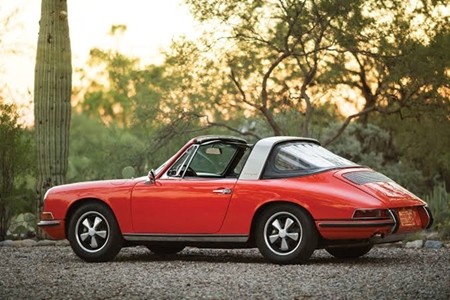
Porsche
Targa.
The final story (for this issue) is about a
motorcycle racer who used to travel to meetings with his race bike in
the sidecar of his outfit.It blew a piston on the way to a meeting but
the resourceful rider turned up a new piston out of hardwood, fitted the
rings, fixed a metal plate to the top of the piston and carried on
motoring! That’s what we call ‘bush’ engineering.
|

|
The amazing Andre Citroen and Traction Avant
Hands up all those who have owned a Citroen. Hands up all
those who have had problems with their Citroen. Just as I thought – 100 percent.
The entire history of Andre Citroen and his cars really is
quite amazing. He began designing and building cars just over 100 years ago.
His first car, the type A of 1919 had a 1,323cmᶟ
four-cylinder engine and with a top speed of 65kph, the Type A was very popular.
In 1924 CitroŽn presented the B10, the first car with an
all-steel body, replacing the combined wood and metal bodywork. To demonstrate
just how tough these vehicles were, Andre had two of them pushed over a cliff!
They survived, and so did Andre.
To highlight the qualities of his half-track vehicles
launched in 1922, Andrť CitroŽn decided to send them across the Sahara desert.
Georges-Marie Haardt and Louis Audouin-Dubreuil traveled from Touggourt to
Timbuktu and back again between 17 December 1922 and 7 March 1923.
Building on the success of the Sahara crossing two years
earlier, CitroŽn organised the CroisiŤre Noire expedition. This crossed the
African continent from north to south, travelling from Colomb-Bťchar to Cape
Town, between 28 October 1924 and 26 June1925.
The 1920’s were a busy time for Citroen, releasing the B14,
a mass-market car with luxury features. It was one of the most popular vehicles
in the inter-war period. The brand also presented the B15, the first French
commercial vehicle with a closed cab. CitroŽn presented the B14, a mass-market
car with luxury features. It was one of the most popular vehicles in the
inter-war period.
In 1931 Andrť CitroŽn returned from the US with lots of new
ideas including the “floating-power” engine. He used this concept to once again
contribute to modernizing the car. This innovative system (at the time) placed
rubber mounts between the engine and chassis to reduce engine vibrations.
However, it was in 1934 that Citroen released the Traction
Avant, setting the automotive industry on its ear. This established Citroen’s
reputation for innovative technology. CitroŽn also presented the Type 7A, a car
that blended innovation with safety, comfort and performance. It created a
revolution in the automotive industry, with, for example: front-wheel drive,
unitized all-steel body, hydraulic brakes on all four wheels, independent 4
wheel suspension with a torsion bar, the floating-power engine with overhead
valves and removable cylinder liners.
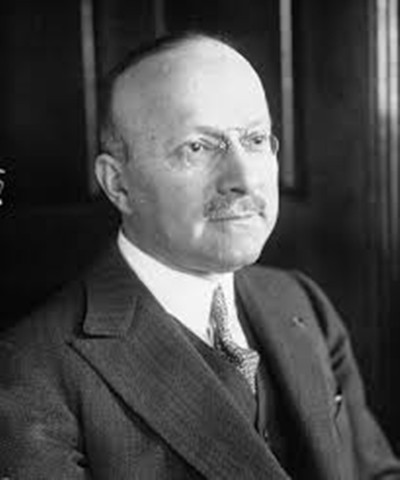
Andre Citroen.
Unfortunately, the launch of the Traction Avant did not
resolve the serious financial difficulties facing the Citroen, which was unable
to meet its financial commitments, despite being the leading vehicle
manufacturer in France and Europe at this time, and world number two. The French
government asked Michelin, the main creditor, to clear the company accounts and
put the company back on a sound footing. CitroŽn continued to function under
Michelin's control, producing 50,000 cars each year.

Citroen Traction Avant.
Andre Citroen died 7 March 1935; however, Citroen as a
manufacturer continues.
Over the next 40 years, Citroen produced some amazingly
ugly body styles as well as different technology, but distinctly French.
In 1974, Michelin and the Peugeot group decide to merge
Automobiles CitroŽn and Automobiles Peugeot to create a group with international
reach.
Having owned a CX 1220 Club and a CX2200, despite the
comfort, there were infuriating items such as the inboard disc brakes on the CX,
which wore out in 3000 km and the pneumatic spheres which not only kept the car
“afloat” but also powered the brakes. A message would appear on the dash which
stated “Stop, brake failure”. (No message to tell you how to do it.)
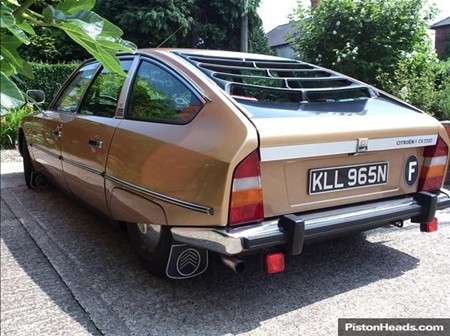
Citroen CX 2200.
Pencils out, here is the 2020 F1 calendar
A very full calendar for 2020, the longest in the history
of F1. How the teams will manage the logistics involved, we shall see as the
year goes on. Do not be surprised if the strong teams will leave the middle and
lower echelons far behind.
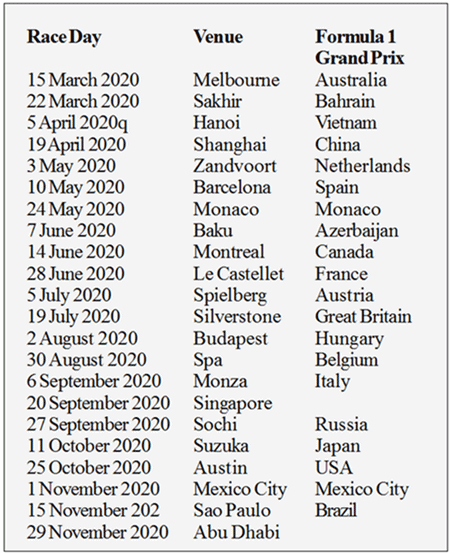
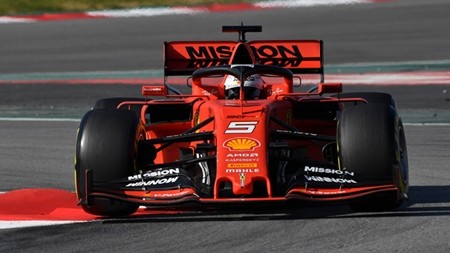
Leclerc Ferrari.
Smoking in cars? Another risk factor?
I (a non-smoker) do not like riding in cars where the
driver smokes. The smell permeates everything including the roof lining, and the
hot embers burn holes in the upholstery. But those are not the real reason I
dislike cigarette smoking in cars.
The real reason was spelled out by Dr Hilary Cass, the
President of the Royal College of Paediatrics and Child Health (English spelling
prevails as the college is very British), who said, “Levels of tobacco smoke in
a car can be even higher than in a smoky bar and the effect on children can be
serious, with second-hand smoke strongly linked to chest infections, asthma, ear
problems and cot deaths. You can’t smoke in public places any more. It’s illegal
to inflict your smoke on colleagues at work. So why should you be allowed to
inflict it on passengers?”
However, it has been known for many years that children in
smoking households suffer from more respiratory problems than the children from
non-smoking households. “Thorax” the International Journal of Respiratory
Medicine stated many years ago that “Previous reviews in this series have shown
that parental smoking is associated with an increased incidence of acute lower
respiratory illnesses, including wheezing illnesses, in the first one or two
years of life.”
I think you should just accept that at face value, do your
own ‘googling’ if you like, but undoubtedly cigarette smoke and children is not
a good mix. With the details that levels of cigarette smoke in closed cars is
higher than in smoky bars, this should ring some warning bells.
As I said at the beginning of this article, I do not try
and push the message to adult smokers, so please do not give me a barrage of
‘hate mail’. However, if this item about kids and smoking in cars has hit a
nerve, here is the truth on stopping smoking. The success rate really hangs on
commitment.
So what is the best way? It’s called Cold Turkey. The proof
is in the numbers. There has been enough research done and the prime factor is
that the quitter has to be committed to the concept of becoming a non-smoker.
Doing it (quitting) for somebody else, because you lost a bet, because you are
being nagged into it by your wife, girlfriend, boyfriend is doomed to failure, I
am afraid. This is something which requires your total commitment. 100 percent
all the way.
Cold Turkey demands you stop immediately. Go through any
withdrawals. Come out the other side as a non-smoker and you can stay that way
for the rest of your life (and your children’s lives).
Is this the answer to congestion?
Many decades ago, while I was still at university I was
given plans for a Bensen gyrocopter. I was immediately taken with the simplicity
of the design and the fact that it was obvious that even a home engineer could
build one of these contraptions. My day-dreams were all full of my going to uni
and swooping down onto the lawns and stepping out with a flourish. My
earth-bound class mates would be so jealous, I could almost taste it!

Bensen gyrocopter.
My day-dreams came to a close when I was informed by the
civil aviation people in Australia that I would not be given a certificate of
airworthiness, and if I ever did fly the thing, it had to be tethered to a car.
The thought of being trundled to university behind a car did not have anywhere
near the same mystique, and so my gyrocopter idea did not get off the ground,
literally or metaphorically.
Now while Leonardo da Vinci has been credited with
designing everything from the porta-loo to the helicopter, he did not design the
gyrocopter. That was done by Spanish engineer Juan de la Cierva and the maiden
flight was in 1923.
The name he gave it was an ‘Autogiro’ (Spanish) and since
then it has also been known as an autogyro, gyroplane, gyrocopter, or rotaplane,
and covers a type of rotorcraft which uses an un-powered rotor in autorotation
to develop lift, and an engine-powered propeller, similar to that of a
fixed-wing aircraft, to provide thrust. While similar to a helicopter rotor in
appearance, the autogyro’s rotor must have air flowing through the rotor disc in
order to generate rotation.
The term Autogiro became the trademark of the Cierva
Autogiro Company, and the term Gyrocopter was used by E. Burke Wilford who
developed the Reiseler Kreiser feathering rotor equipped gyroplane in the first
half of the twentieth century. The name gyrocopter was later adopted as a
trademark by Bensen Aircraft. It was one of these B-7M designs that I had
stumbled across in 1958, with the motive power being the 1200 cc VW air-cooled
engine. Alas, my one was still-born.
I would be interested to hear if any of the readers has
experienced flights in a gyrocopter.
|

|
Turkish leader unveils prototypes of 1st domestic car
Ankara, Turkey (AP) — Turkish
President Recep Tayyip Erdogan on Friday unveiled prototypes of a domestically
produced electric car, putting him closer to fulfilling a long-held dream of
building Turkey's first "national" automobile.
Erdogan showcased the SUV and sedan models of the car,
known for now as TOGG after a consortium of Turkish companies that will produce
them, at a ceremony in Gebze, in Turkey's northwestern industrial heartland.
The president was scheduled to test drive a car across a
suspension bridge over the Gulf of Izmit. He offered to put his name down on a
possible list for advance orders. The Turkish vehicles are expected to hit the
market in 2022.
"We are witnessing a historic day, realizing a 60-year
dream," Erdogan said. "I know that our people is impatiently waiting for the day
they can own this car."
The Turkish leader has long pushed industrialists to build
a domestic automobile as part of his vision for making Turkey an economic
powerhouse.
The vehicle is being produced by a consortium of five
Turkish companies called the Automobile Initiative Group of Turkey, or TOGG, in
cooperation with the Turkish Union of Chambers and Commodity Exchanges.
Turkish media reports said the car was designed by Italy's
Pininfarina design company, which has created models for Ferrari and
California-based electric car maker Karma.
Erdogan said the cars would be produced in a factory to be
built on former military-owned land in the province of Bursa. The factory,
scheduled to be completed in 2021, is expected to employ 4,300 people.
TOGG chief executive Gurcan Karakas said Turkey hopes to
produce five different models of the car within 15 years.
The TOGG is Turkey's second effort to produce a
Turkish-made automobile. During the 1960s, a group of Turkish engineers built
prototypes of a car called Devrim, or Revolution in English. The project was
later abandoned.
Several foreign brands, including Ford and Toyota, are
assembled in Turkey.
Unfortunately, this item is not accurate. Turkey also
built a domestic car called the Anadol. This was produced from 1966 to 1991.
Introducing a bit of culture into the
column
Satnav by Pam Ayres
I have a little Satnav, It sits there in my car
A Satnav is a driver's friend, it tells you where you are.
I have a little Satnav, I’ve had it all my life
It's better than the normal ones, my Satnav is my wife.
It gives me full instructions, especially how to drive
“It's sixty miles an hour,” it says, “You're doing sixty
five.”
It tells me when to stop and start, and when to use the
brake
And tells me that it's never ever, safe to overtake.
It tells me when a light is red, and when it goes to green
It seems to know instinctively, just when to intervene.
It lists the vehicles just in front, and all those to the
rear
And taking this into account, it specifies my gear.
I'm sure no other driver, has so helpful a device
For when we leave and lock the car, it still gives its
advice.
It fills me up with counseling, each journey's pretty
fraught
So why don't I exchange it, and get a quieter sort?
Ah well, you see, it cleans the house, makes sure I'm
properly fed
It washes all my shirts and things, and keeps me warm in
bed!
Despite all these advantages, and my tendency to scoff
I only wish that now and then, I could turn the bugger off.
Some of the worst cars of the last 50
years
A friend of mine sent me an item about the 10 best cars in
the past 50 years, and obviously there would be many different ideas from the
enthusiasts. Unfortunately, for many people, they are only guessing, because
just how many of the readers have actually driven a Porsche GT3, or even a
Porsche Targa?
My friend, of course, was having a gentle, but not so
subtle, dig at me for being a motorist for too many years. I have to admit that
I started driving in the 1950s, and I also have to admit that it was my father’s
car, and he didn’t know about the mischief I would get up to when my parents
were away for the weekend. The car? A 1939 Austin 12, made at the beginning of
the war. Remember that war? That was the one the Germans lost, so they could
come back later and take over Rolls-Royce, Bentley and Mini. What was left, like
MG and Rover ended up in China.
But back to Dad’s Austin 12. It was a large four door
family saloon produced by the Austin Motor Company and was launched in August
1939 and produced until replaced in 1947 by the similar sized but larger engined
Austin A70 Hampshire. With beam axles front and rear and mechanical brakes, it
was more comfortable at rest than when in motion. It would not pass any of
today’s design rules. Definitely one of the worst cars I have ever driven.
My first ‘real car’ which was mine and mine only, was a
1949 Austin A40 and was 10 years old when I took ownership. It was not a good
buy, blowing up after two weeks. These days I would be more careful in
pre-ownership checks. However, it was repaired and did serve me for the next
10,000 miles without too many hiccups. But it was painfully slow.
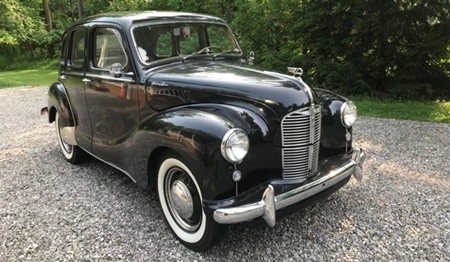
Austin A 40.
The A40 was actually considered a power machine in its day.
A 1.2 litre straight-4 OHV engine produced 40 bhp (30 kW) at 4200 rpm. It also
had front coil sprung independent suspension but retained a rigid axle and semi
elliptic leaf springs at the rear. The Girling brakes with 9 in (229 mm) drums
were operated hydraulically at the front and mechanically at the rear.
An A40 tested by The Motor magazine in 1948 had a top speed
of 70 mph (110 km/h) and could accelerate from 0-60 mph (97 km/h) in 37.2
seconds. Read that again – 37.2 seconds! To record those sorts of times, I think
they probably had to use a calendar! Another in the ‘worst car’ category? Well,
certainly in the slowest car category.
Autopilot in trouble again
3 crashes, 3 deaths raise questions about Tesla's
Autopilot
Detroit (AP) — Three crashes involving Teslas that
killed three people have increased scrutiny of the company's Autopilot driving
system just months before CEO Elon Musk has planned to put fully self-driving
cars on the streets.
On Sunday, a Tesla Model S sedan left a freeway in Gardena,
California, at a high speed, ran a red light and struck a Honda Civic, killing
two people inside, police said.
On the same day, a Tesla Model 3 hit a parked fire-truck on
an Indiana freeway, killing a passenger in the Tesla.
And on Dec. 7, yet another Model 3 struck a police cruiser
on a Connecticut highway, though no one was hurt.
The special crash investigation unit of the National
Highway Traffic Safety Administration is looking into the California crash. The
agency hasn't decided whether its special-crash unit will review the crash that
occurred Sunday near Terre Haute, Indiana. In both cases, authorities have yet
to determine whether Tesla's Autopilot system was being used.
NHTSA also is investigating the Connecticut crash, in which
the driver told police that the car was operating on Autopilot, a Tesla system
designed to keep a car in its lane and a safe distance from other vehicles.
Autopilot also can change lanes on its own.
Tesla has said repeatedly that its Autopilot system is
designed only to assist drivers, who must still pay attention and be ready to
intervene at all times. The company contends that Teslas with Autopilot are
safer than vehicles without it, but cautions that the system does not prevent
all crashes.
Even so, experts and safety advocates say a string of Tesla
crashes raises serious questions about whether drivers have become too reliant
on Tesla's technology and whether the company does enough to ensure that drivers
keep paying attention. Some critics have said it's past time for NHTSA to stop
investigating and to take action, such as forcing Tesla to make sure drivers pay
attention when the system is being used.
NHTSA has started investigations into 13 Tesla crashes
dating to at least 2016 in which the agency believes Autopilot was operating.
The agency has yet to issue any regulations, though it is studying how it should
evaluate similar "advanced driver assist" systems.
"At some point, the question becomes: How much evidence is
needed to determine that the way this technology is being used is unsafe?" said
Jason Levine, executive director of the nonprofit Center for Auto Safety in
Washington. "In this instance, hopefully these tragedies will not be in vain and
will lead to something more than an investigation by NHTSA."
Levine and others have called on the agency to require
Tesla to limit the use of Autopilot to mainly four-lane divided highways without
cross traffic. They also want Tesla to install a better system to monitor
drivers to make sure they're paying attention all the time. Tesla's system
requires drivers to place their hands on the steering wheel. But federal
investigators have found that this system lets drivers zone out for too long.
Tesla plans to use the same cameras and radar sensors,
though with a more powerful computer, in its fully self-driving vehicles.
Critics question whether those cars will be able to drive themselves safely
without putting other motorists in danger.
Doubts about Tesla's Autopilot system have long persisted.
In September, the National Transportation Safety Board, which investigates
transportation accidents, issued a report saying that a design flaw in Autopilot
and driver inattention combined to cause a Tesla Model S to slam into a
fire-truck parked along a Los Angeles-area freeway in January 2018. The board
determined that the driver was overly reliant on the system and that Autopilot's
design let him disengage from driving for too long.
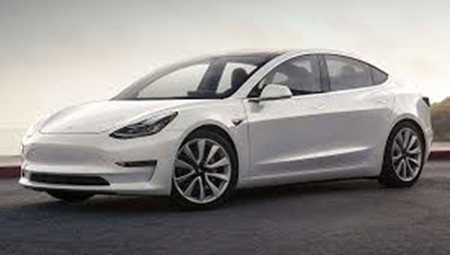
Tesla 3.
In addition to the deaths on Sunday night, three U.S. fatal
crashes since 2016 — two in Florida and one in Silicon Valley — involved
vehicles using Autopilot.
David Friedman, vice president of advocacy for Consumer
Reports and a former acting NHTSA administrator, said the agency should have
declared Autopilot defective and sought a recall after a 2016 crash in Florida
that killed a driver. Neither Tesla's system nor the driver had braked before
the car went underneath a semi-trailer that had turned in front of the car.
"We don't need any more people getting hurt for us to know
that there is a problem and that Tesla and NHTSA have failed to address it,"
Friedman said.
In addition to NHTSA, states can regulate autonomous
vehicles, though many have decided they want to encourage testing.
In a statement, NHTSA said it relies on data to make
decisions, and if it finds any vehicle poses an unreasonable safety risk, "the
agency will not hesitate to take action." NHTSA also has said it doesn't want to
stand in the way of technology given its life-saving potential..
|

|
|

